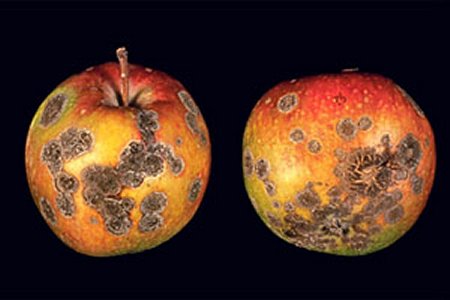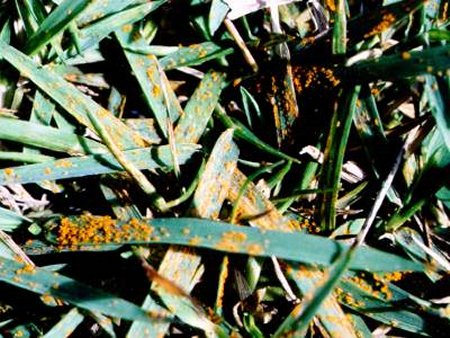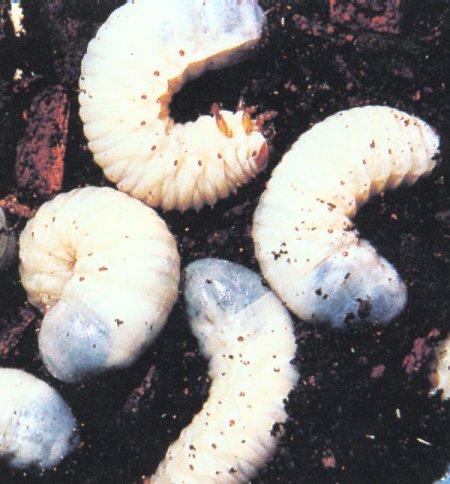
2005 Year in Review
Back to Page two: Other Listing | Back to Year in Review Index
Summer Gardening Problems |
|
Source: James Schuster (708) 352-0109; Contact: Bob Sampson, Extension Communications Specialist; Phone (217) 244-0225; rsampson@uiuc.edu Scab, rust, and grubs are some of the problems that may face the home gardener during the summer season, said a University of Illinois Extension horticulture educator. "Scab is a foliage disease of plants in the rose family," said James Schuster. "Plants such as mountain ash, cotoneaster, roses, and several other plants can get this disease. But the most susceptible are crabapple and apple trees. "The disease starts as a green spot that rapidly turns into a brown spot. On more susceptible plants, the leaves turn yellow and fall off. The most susceptible plants may only have a few leaves on the end of the twigs most of the summer. Preventive fungicides are available, but planting highly resistant trees is the main control." Rust on lawns occurs during hot weather on lawns, which are low in nitrogen. The easiest control is to give the lawn a light feeding of nitrogen. "Water it in," said Schuster. "Lawns tend to develop low nitrogen conditions when they are not fed as well as when fed but over-watered." Depending on how much rain and watering occurs in the yard, grubs may or may not be a problem. "If you and all your neighbors received plenty of rain during June, then the grubs will be widely distributed and the severe feeding damage--dead lawn--will not be seen," he said. "However, if rain was limited in your area and you were watering while your neighbors were not watering, then the grubs were drawn out of the non-watered lawns to your well-watered lawn." When grubs reach about 12 grubs to a square foot, the feeding will cause dead areas in the lawn. "Look for grubs along the dead/live border--not in the middle of the dead area," said Schuster. "The grubs start hatching in late July and will feed till freezing weather forces them to tunnel deeper into the ground. "Insecticides can help but are only recommended if your lawn actually has 12 or more grubs per square foot or your lawn had grub problems the previous year. Many times dead spots in lawns are due to disease and not grubs." Schuster said grub-killed sod can be easily lifted off the soil immediately after it turns brown. Having to wait several weeks before the dead lawn lifts easily is an indication that the dead spot is not a grub problem. "By early August, tents may be found on the ends of branches of many different trees," said Schuster. "These tents are caused by fall webworms. Even though the tents are not pleasing to look at, the insects are not causing enough harm to the trees to justify any spraying. "The insects never leave the tents to feed. Instead, the tents are enlarged over additional foliage as needed. Most of the tents are high in the tree, making it difficult to reach the tents with any spray." If insecticides are used, they should be applied with enough force to blow a hole through the webbing. Or the insecticide needs to be very persistent so it is still on the green leaves when they are incorporated into the tent. "Neither method is recommended because the insects do not do enough damage to justify the use of any kind of insecticides," said Schuster. by Editor, theCity1.com |
|
Copyright © 2005 TheCity1.com.
All rights reserved


